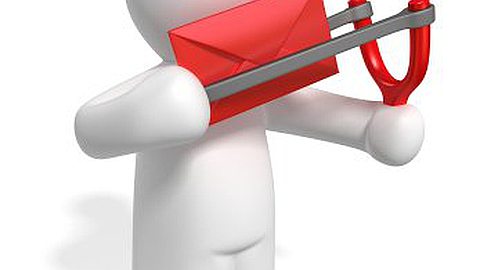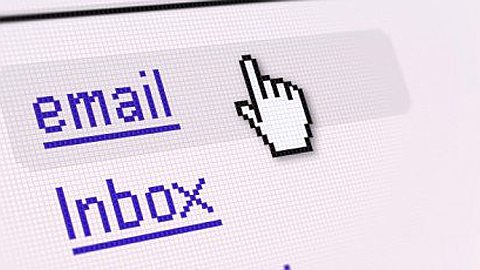How to Write a Convincing E-mail

E-mails are the most common document in the business world. Unfortunately, many e-mails are so poorly written that recipients must struggle to figure out why they're reading the e-mail and what they're supposed to do about it.
Here's a foolproof method to write e-mails that get the job done.
1. Have a specific decision in mind.
The goal of an e-mail is always to get the recipient(s) to make a decision of some kind. Otherwise, why bother writing the it?
Therefore, before you write anything, ask yourself: exactly what decision do I want the recipient to make?
As with all business writing, vagueness is the opposite of useful. The clearer the goal, the more convincing your e-mail will be.
2. Start by writing your conclusion.
Your conclusion is a statement of the decision that you want the recipient to make, based upon the contents of your e-mail.
In school, they probably taught you to start with an introduction and end with an conclusion. Wrong.
Nobody in the business world has time to wander through the development of an idea. If you don't tell them the reason for the e-mail immediately, chances are they'll just move on.
So you start with your conclusion. For example, suppose your goal is get your boss to approve an in-house gym.
WRONG:
Jim,
As you know, employee absenteeism is generally recognized as an ongoing problem with a steep financial impact, both in our company and in other companies in our industries. [yada, yada, yada] Therefore, we should consider allocating money for the installation of a gym at our headquarter facility.
RIGHT:
Jim,
I want you to approve the installation of an in-house gym.
3. Structure your supporting argument into "digestible chunks."
Once you've stated your conclusion, marshall the arguments that support your conclusion (i.e. the decision you want made). To make your arguments "digestible," break them into small "chunks," and present each point with a similar format and sentence structure.
WRONG:
According to a recently published government report, group physical fitness is extremely important even though very few companies actually demonstrate a commitment to it! Many firms identify physical fitness as an undervalued competitive asset, but don't have a plan for improvement in this area, even though physical fitness is strongly linked to corporate and individual economic and personal success. I feel that if we do not address the issue of physical fitness as it enhances workplace productivity, we will be left behind.
RIGHT:
An in-house gym will:
- Reduce absenteeism.
- Increase overall productivity.
4. Bolster each argument with evidence.
It's been said that everyone has two things: a sphincter and an opinion. Unless you provide facts that back up your arguments, your e-mail becomes one giant, opinion and therefore, in the eyes of the recipient, you'll probably seem like one, giant... well..., you get the idea.
WRONG:
An in-house gym will reduce absenteeism because then people will want to come to work rather than stay at home and they won't get sick so much.
RIGHT:
- Reduce absenteeism. According to a National Health Institute survey of 1,000 firms, companies with in-house gyms experience 20% less absenteeism than thosewho lack such facilities.
5. Repeat your conclusion as a "call to action."
At the end of the e-mail, restate the conclusion in a way that provides the recipient with the next step that the recipient must take, assuming the recipient now agrees with your conclusion, based upon the force of your arguments and evidence. Keep it simple and specific.
WRONG:
Your support for this project would be greatly appreciated.
RIGHT:
If you respond to this e-mail with your approval, I'll get the process started.
6. Stick a benefit in the subject line.
Your subject line (aka "title") is the most important part of an e-mail, which is why you write it last, after you've written down both your conclusion and the arguments and evidence that supports that conclusion.
Ideally, a subject line should accomplish two important tasks: 1) interest the recipient enough so that the e-mail gets opened and read, and 2) imply the conclusion that you want to the recipient to accept.
In most cases, the best way to accomplish both tasks is to encapsulate a benefit (or benefits) that will result from the decision that you'd like the recipient to make.
WRONG:
Subject: The Health Impact of In-House Employee Fitness Programs
RIGHT:
Subject: How we can reduce absenteeism
To wrap it up, here are the two e-mails:
WRONG:
To: Jim@Acme.com
Subject: The Health Impact of In-House Employee Fitness Programs
Jim,
As you know, employee absenteeism is generally recognized as an ongoing problem with a steep financial impact, both in our company and in other companies in our industries. An in-house gym will reduce absenteeism because then people will want to come to work rather than stay at home and they won't get sick so much. Therefore, we should consider allocating money for the installation of a gym at our headquarters facility. Your support for this project would be greatly appreciated.
Jill
RIGHT:
To: Jim@Acme.com
Subject: How we can reduce absenteeism
Jim,
I want you to approve the installation of an in-house gym. This will:
- Reduce absenteeism. According to a National Health Institute survey of 1,000 firms, companies with in-house gyms experience 20% less absenteeism than thosewho lack such facilities.
- Increase productivity. We have 50% more absenteeism than other firms in our industry, so reducing that number by 20% will automatically increase our productivity by 10%.
If you respond to this e-mail with your approval, I'll get the process started.
Jill





